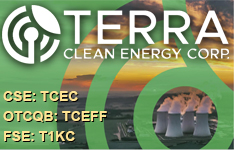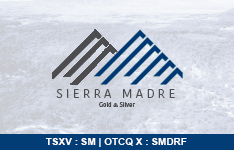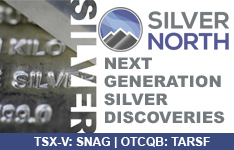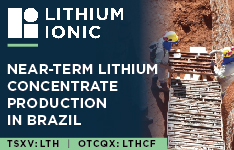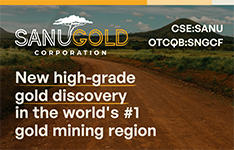Artificial intelligence (AI) is transforming healthcare with its ability to analyze vast data sets and produce meaningful insights, often in real time, a Thoughtful.ai post noted. Use of such technology ultimately results in improved patient care and other outcomes.
The sector is booming. The global AI in healthcare market is forecasted to expand at a 37.66% compound annual growth rate between this year and 2034, Towards Healthcare reported. During the forecast period, the market is projected to reach $674.19B in value, more than 17 times its starting figure, $37.98B. The expected growth will result from "increasing adoption of advanced technology, innovation in clinical research and rising demand for customized healthcare," the healthcare consulting firm wrote.
In this article, we look at two public companies in the sector, each with different target markets and its own AI-powered, data-analyzing platform.
SOPHiA GENETICS SA (SOPH:NASDAQ)
With headquarters in Switzerland and the U.S., this healthcare tech company develops products that apply AI and machine learning to multimodal, genomics, radiomics and clinical trial data sets to improve patient care and drug discovery. Its platform, SOPHiA DDM, cloud-based and available as software-as-a-service, analyzes, standardizes and interprets various types of complex data sets, including genomic, radiomic, biologic, clinical, pathology and clinical trials, then generates actionable insights for healthcare professionals, researchers and biopharma companies.
"Our mission is to transform patient care by expanding access to data-driven medicine globally," the company's website notes.
The SOPHiA DDM platform powers its newest products, collaborations with Memorial Sloan Kettering Cancer Center (MSK). MSK-ACCESS is a decentralized version of MSK's liquid biopsy test for noninvasive cancer genomic profiling and disease monitoring. MSK-IMPACT is MSK's comprehensive genomic profiling test for identifying mutations and other critical changes in cancer genes.
SOPHiA has 800 hospitals and labs as customers. Its 5,000 users, located throughout 70 countries, have generated more than 1 million data analyses, according to the March 2025 Company Overview. The market opportunity is $40 billion ($40B).
In its most recent news, SOPHiA GENETICS reported its Q4/24 and full-year 2024 (FY24) earnings, which reflected year-over-year (YOY) improvement.
"SOPHiA turned in a relatively challenging 2024 as they drove 4% revenue growth while growing their volumes by 11%, which implies a 6–7% decline in revenue per analysis, which declined in part due to headwinds with biopharma customers," wrote BTIG Analyst Mark Massamo in a March 5 research report.
According to the release, FY24 revenue was $65.2 million ($65.2M), up 4% from the year before. Gross margin was 72.8% on an adjusted basis, an increase of 72.2% from the year before.
Overall, the company posted an operating loss of $44.8M on an adjusted basis, for a 20% improvement over FY23.
Q4/24 revenue also was 4% higher YOY, at $17.7M. Gross margin was 74.2% on an adjusted basis, higher than in Q4/23. Operating loss for the final 2024 quarter was $10.2M on an adjusted basis, which was 23% better than in Q4/23.
"We continued driving widespread adoption of SOPHiA DDM in 2024, achieving a record number of analyses, major new customers wins and healthy volume growth during the year," Cofounder and Chief Executive Officer Dr. Jurgi Camblong said in the news release. "We also refueled the company's growth engine in 2024 by launching an exciting suite of new products and signing a record number of new customers."
The Catalysts: More Growth
Catalysts in the rest of this year, Camblong noted in the release, include garnering additional MSK-ACCESS and MSK-IMPACT customers, expanding the company's footprint in the U.S. on the heels of recent new wins there and leveraging existing customers, including the 92 it landed already this year.
Massaro wrote that he anticipates Sophia, in 2025, will sign up more significant customers in the U.S., including larger labs, and form additional strategic partnerships, including in pharma. Also, he expects the company to complete the process of getting its already-inked new customers up and running with the SOPHiA DDM technology.
Stock Undervalued, Buy Rated
Based on SOPHiA GENETICS' FY24 results, BTIG's Massaro maintained his Buy recommendation on the company but lowered his price target by 20%. His new target on SOPH, trading below the small cap peer group, suggests a 51% uplift.
"We were surprised to see revenue/application decline in 2024, and our Buy thesis assumes the company can turn, on new customers of higher-priced applications," the analyst wrote.
Other analysts rate SOPHiA Buy, too. One is William Bonello with Craig-Hallum. Another is Conor McNamara with RBC Capital Markets, according to Business Insider. McNamara's target price on SOPHiA implies 112% return potential.
Ownership and Share Structure
According to Refinitiv, 11 strategic entities own 6.53% of SOPHiA, the top investor of which is Cofounder and CEO Dr. Jurgi Camblong with 3.97%.
The largest percentage of the company, 43.79%, is held by numerous institutions. Of these, the Top 3 are Alchylo NV with 10.46%, Generation Investment Management LLP with 10.16% and aMoon Fund with 8.25%. The rest is in retail.
SOPHiA GENETICS has 66.83 million (66.83M) outstanding shares and 62.47M free float traded shares. Its market cap is $207.84M. Its 52-week high and low are $6.28 and $2.70 per share.
Firefly Neuroscience Inc. (AIFF:NASDAQ)
This New York-based company develops AI-driven products and technologies to improve brain health outcomes for patients with neurological and mental disorders.
Firefly Neuroscience Inc.'s flagship product, Brain Network Analytics (BNA), is a software platform that can take a patient's electroencephalogram (EEG), or brain scan, analyze it and provide case specific, objective, AI-powered brain health assessments, including diagnoses and treatment recommendations, the company's website noted. It also can measure treatment efficacy, track disease progression and improve patient compliance.
Backed by eight patents and approved by the U.S. Food and Drug Administration, BNA uses Firefly's ever-expanding database containing 77,000 EEGs representing 12 disorders, information about 17,000 patients and 20 peer-reviewed publications.
Firefly's initial focus is the U.S., where it recently began selling BNA. Prospective BNA customers include medical practitioners and companies doing drug research and clinical trials. In the States, the total addressable market in neurology is about $1B, according to the healthcare tech firm's Investor Presentation, and BNA assessments are reimbursable by health insurers.
In its most recent news, Firefly will collaborate with Hemostemix, an autologous stem cell therapy platform company, on the latter's upcoming clinical trial, it was announced in a news release. In the study, patients will receive ACP-01, Hemostemix's stem cell therapy, and Firefly's BNA will be used to study the brain wave activity of these patients before and after treatment, both at rest and during visual and auditory cognitive tasks.
"Hemostemix's Phase 1 clinical trial of vascular dementia is in line with Firefly's collaborations with globally recognized companies, such as Bright Minds Bioscencies Inc. (DRUG:NASDAQ), Novartis AG (NVS:NYSE) and Takeda Pharmaceutical Co. Ltd. (TAK:NYSE)," the release noted.
The collaborators will use BNA to compare the patients' data against Firefly's database, have the result be scored and the score assessed. The changes in different brain measures among the treated patients will be compared to the expected normative changes, over a span of six months, and these data analyzed.
"Hemostemix and FireFly will work together to generate an exploratory endpoint to objectively prove that intrathecal injection of ACP-01 is a safe, preliminarily efficacious and clinically relevant treatment for vascular dementia," the release noted.
The Catalysts
Firefly has two key, ongoing catalysts this year, according to its Investor Presentation. One is to continue the commercial rollout of BNA in the States. The second is to partner with biopharma companies developing central nervous system-focused drugs.
Compelling Investment
Strategic partnerships may afford Firefly access to distribution channels, additional funding and expertise, wrote Markets.com in a Feb. 12 article, any of which would help the company grow. Collaborations with various entities, from healthcare providers to research institutions, would enhance its market reach and credibility.
Overall, Firefly is a compelling investment opportunity, noted Markets.com. With increasing demand for effective treatments and technologies for conditions like Alzheimer's disease, Parkinson's disease and traumatic brain injuries, Firefly is well-positioned in the market. The neuroscience market is expected to grow significantly over the next decade.
However, the field is competitive, and the company could face challenges that adversely impact its performance. Markets.com advised potential investors to look for consistent revenue growth from Firefly, closely monitor its progress toward becoming profitable and consider the associated risks.
Ownership and Share Structure
A total of 13 strategic entities together owns the largest percentage of Firefly, 65.22%, according to Refinitiv. The Top 3 are Windsor Private Capital LP with 19.17%, David Ian Johnson with 14.04% and Roxy Capital Corp. with 8.69%.
Institutional investors hold 12.91%, and the rest is in retail.
Firefly has 7.95M outstanding shares and 2.76M free float traded shares. Its market cap is $30.83M. Its 52 week range is $1.86–17.20 per share.
| Want to be the first to know about interesting Technology investment ideas? Sign up to receive the FREE Streetwise Reports' newsletter. | Subscribe |








